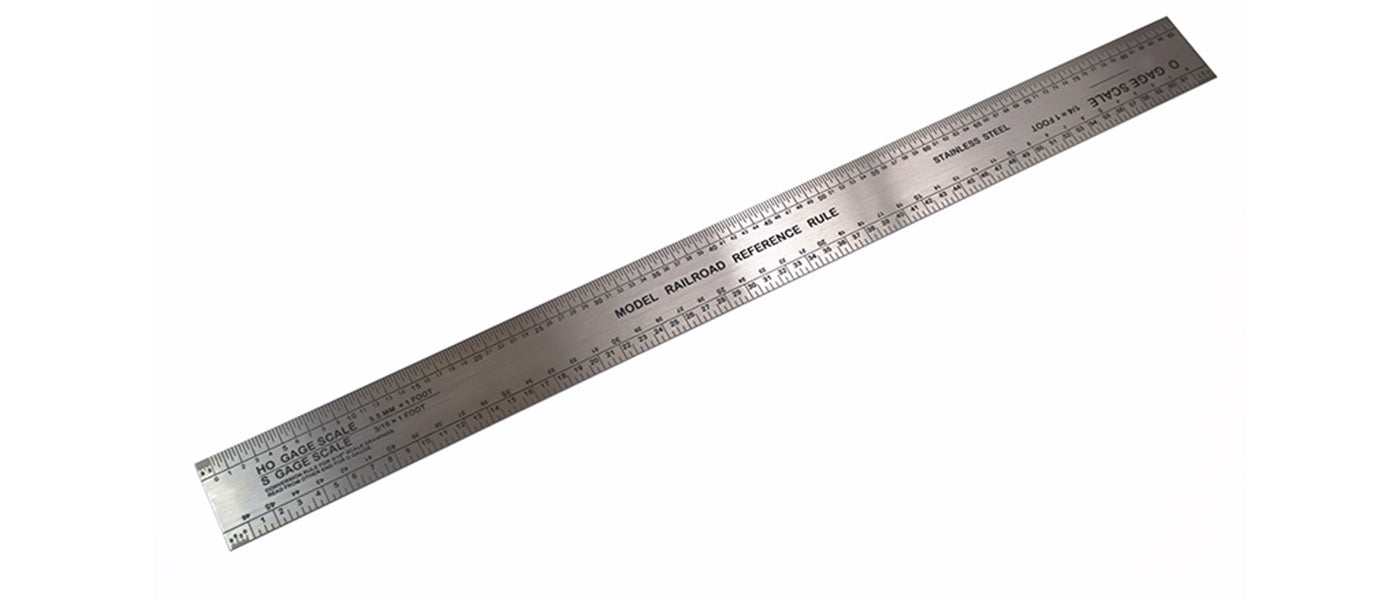
How to Read a Model Train Ruler: Measuring Tips and More
Model trains have been around for over a hundred years, and according to some sources, these train miniatures go as far back as the 1840s. It is a hobby where rails, buildings and landscapes are recreated on a smaller scale for the train to ride along. Railway modeling hobbyists carefully craft entire scenes surrounding the train tracks, including towns or cities for their model trains to ride through. They often do this by hand and use many precision tools like saws, mitre boxes or pliers. Other indispensable tools are the model railroad ruler or model railroad tool set.
Use a model railroad tool set to have all tools in one convenient set!
The model railroad ruler includes several gauge scales for the different scale model trains. The scales include the HO gage scale, the N gage scale, the S gage scale and the O gage scale. It also includes a chart of decimal equivalents for number drills and a reference table. Below we’ll cover what each of those scales and charts means and how to read them.
The gage scales
Model trains come in several sizes, each scale represents the measurement between the outside rails of the train track. These scales standardized the model railroad hobby industry. This way you can be sure that the N-scale locomotive will fit and chug along on the N-scale track.
Z scale - 1:220
Very, very small scale, the span between the rails is ¼”. So small! The details can be intricate and all the accompanying parts are also very small. This means that the rail line and surrounding landscapes built along the track can be vast and sprawling. Think countryside farms, tunnels through mountains and many stations along the way for the trains to stop at, but doesn’t take up a lot of floor space.
N scale - 1:160
The gauge is 9mm, which means that the distance between the rails measures 9mm or 0.354 inches. In the UK the scale ratio is 1:148 and in Japan, the scale ratio is 1:150. This scale is the second most popular scale for train modelers. It’s still small, so the track can be longer.
HO scale - 1:87
It’s half the O scale where the measurement between the rails is ⅝”. This is said to be the most popular scale worldwide and there is even a group called the British 1:87 Society for fans of the HO scale model train system in the UK.
O scale - 1:48
Traditionally associated with the Lionel Trains. At this scale, there is more detail in the trains and their parts for a more realistic look. The space between the rails at this scale is 1¼”.
G scale - 1:22.5
The largest of the miniature trains. The space between the rails measures 1¾”. In pop culture, you’ve probably seen a train set in this scale under a Christmas tree.
There are additional and brand or region-specific scales like the Super-O gauge, O-27 gauge and Om gauge. So when shopping for trains, tracks and parts, be sure to triple-check what gauge you’re buying.

How to read the ruler
We’re going to use the O Gage Scale as an example. Examine the ruler and identify the O Gage Scale label. The numbers below the ruler notches that are “the right side up” are the numbers for that particular gauge scale.
Pro Tip:
Use nail polish or a bright color marker to underline the scale you’ll be working with so that you don’t accidentally use the wrong one while working.
Shop for a Model Railroad Ruler
Charts
The Scale Model Railroad Ruler also includes charts. One is a reference table for tap drill sizes for small screws. There is a decimal equivalents chart for number drills as well. A drill index has the same chart and decimal equivalent for each drill bit. These are quick reference guides for conversion or selecting drill sizes for small screws as they quickly help identify which drill size to use for a particular screw size.
There is a rather important formula included, which is the formula for 75% depth of thread:
DIA. OF TAP MINUS .974 / NO. THREADS PER INCH. = DIA. OF HOLE
Conclusion
Consider this ruler a handy, stainless steel “cheat sheet”! Have fun building!